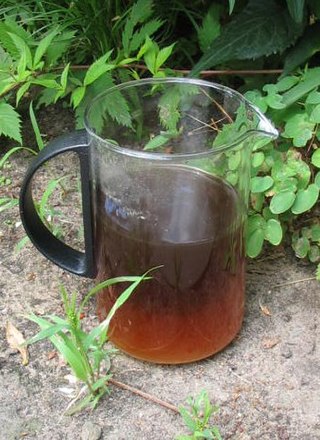Top Qs
Timeline
Chat
Perspective
Lant
Aged or fermented urine From Wikipedia, the free encyclopedia
Remove ads
Lant is aged urine. The term comes from Old English hland, which referred to urine.[1] Collected urine was put aside to ferment until used for its chemical content in many pre-industrial processes, such as cleaning and production.[2]
This article is missing information about chemistry (what’s making it caustic [ammonia?], how it’s formed [urease?]). (March 2022) |

Remove ads
History
Look up lant in Wiktionary, the free dictionary.
Because of its ammonium content, lant was most commonly used for floor cleaning and laundry. According to early housekeeping guides, bedpans would be collected by one of the younger male servants and put away to ferment to a mild caustic before use.
In larger cottage industries, lant was used in wool-processing[3] In times of urgent need and in districts where these were the chief industries, the whole town was expected to contribute to its supply.
"Lant. Stale urine. It was preserved in a tank and having been mixed with lime used for dressing wheat before it was sown to keep the birds from picking up the seeds."
— Sidney Addy, Glossary of Sheffield Words 1888[4]: 164
Remove ads
Related info
LaNt (with an alternate capitalization) may also refer to Laminin N-terminus proteins.[5] Laminins are basic structural proteins of basement membranes. Some particularly small sized proteins within this family of proteins are called LaNt proteins.
References
Further reading
Wikiwand - on
Seamless Wikipedia browsing. On steroids.
Remove ads
